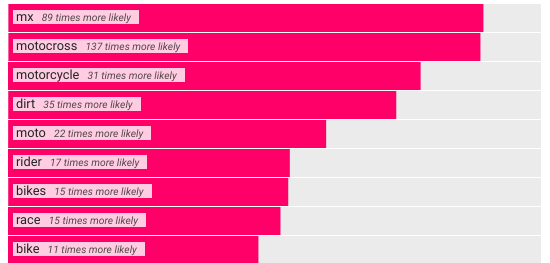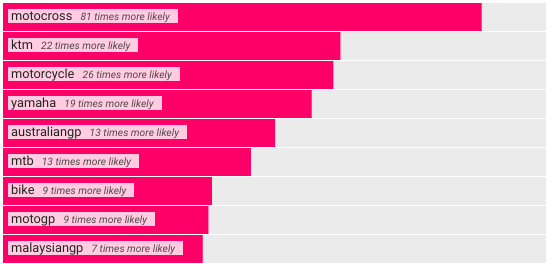
Demographics and psychographics are both critical aspects of consumer research and are used by marketers to understand their ideal customers better. Traditionally, demographics were easier to compile (and therefore much more widely used) due to the steady stream of information available such as annual census information and other paper-based sources.
On the other hand, psychographics, due to their detail and sometimes ambiguity, were much harder to obtain. In fact, many marketers are still stumped – where can they access quality psychographic data quickly and at scale?
Demographic information includes the basics: age, gender, race, location, and profession. While demographics are still valuable and can be used as a starting point, they don’t shed light on the passion points and interests of an audience.
Psychographics, however, focus on the interests, affinities, and emotions of a group of people – exactly the things marketers need to understand to best position their product. When creating a campaign or any form of communications to your audience, it is critical to connect with the audience on a cultural and emotional level to ensure that the look, feel, and tone of your content fits.
To illustrate the importance of detailed psychographic data, we analyzed a group of Motocross fans, using Affinio, that follow @gopro and compiled both a demographic and psychographic profile for them.
Demographics of sample motocross members:
Motocross fan 1:
Age: 20
Sex: Male
Race/Ethnicity: Filipino
Location: Texas
Profession: Boat Mechanic
Motocross fan 2:
Age: 22
Sex: Male
Race/Ethnicity: Hispanic
Location: Virginia
Profession: Mechanic at U.S. Navy
Motocross fan 3:
Age: 25
Sex: Male
Race/Ethnicity: Caucasian
Location: Washington State
Profession: Commercial Pilot
Motocross fan 4:
Age: 13
Sex: Male
Race/Ethnicity: Caucasian
Location: New Mexico
Profession: Student
Motocross fan 5:
Age: 30
Sex: Male
Race/Ethnicity: Caucasian
Location: Arizona
Profession: Graphic Designer
Motocross fan 6:
Age: 27
Sex: Male
Ethnicity: Caucasian
Location: Arizona
Profession: Sales at Goodyear Commercial tire
The demographic details above show that these motocross cluster members have little in common other than that they are males living in the USA. Their ages, locations, race/ethnicity, professions, and buying power all vary. To reach this audience in an authentic way, marketers must know what or who they value most, where they get their content, and what content appeals most to them – insights that are not extractable from demographic data alone.
Their data-driven psychographic profile, however, paints a much more detailed picture of who these motocross fans really are and the things they care about most. After reviewing the +62,000 people in this cluster, we found that they all had high affinity to the same topics and accounts. (Details shown below.)
Psychographics of motocross members:
Level of shared interests between all the members of this cluster:
Accounts with the highest affinity to cluster members:
The above image shows the top interests of the Motocross audience. Top interests include professional racers such as Chad Reed and James Stewart; top brands such as Red Bull, Fox Head Inc., and Monster; events such as SuperCross Live and Nitro Circus; as well as media and publications such as Racer X, SPEED, and Dirt Rider Magazine. Already we have an idea of places to reach this ideal audience, who to engage, and which brands could serve as potential partnership opportunities. These are only some of the insights that can be found within these interest tiles.
Terms cluster members use to describe themselves:
Top used hashtags by cluster members:
After comparing the demographic and psychographic profiles of this audience, it became apparent that an audience’s interests transcend demographics. While demographic still help paint a picture of an audience, people from all walks of life, ages, and incomes can share the same passions and interests. Therefore, it is critical for marketers to invest in and understand the psychographics of an audience rather than concentrating on age, gender, location, etc. When developing and executing campaigns, content, messaging, and so on remember: communications resonates with people that share the same psychographics (passion points, interests, and beliefs), not demographics.
Originally posted on the Affinio blog, “Demographics vs. Psychographics and Why Culture Matters Most.”
Read more:



